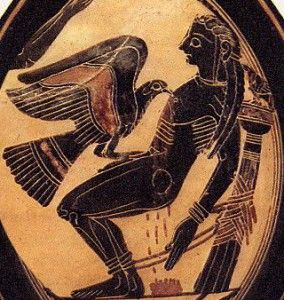Ugolog Creates Surveillance Website To Watch Anyone, Anywhere
Written on April 28, 2009 – 2:43 am | by keith kleiner |

What if people all over the world randomly decided to setup motion detection webcams and then send feeds from these webcams to a single website that would centralize the video data for anyone to search, view, and manipulate? Hot off of the heels of our story yesterday about the implications of cameras recording everything in our lives comes a website called Ugolog that does exactly this. The concept is both spooky and captivating all at once. The privacy implications are just out of control, opening the door to all sorts of immoral and illegal invasions of people’s privacy. On the other hand, the power and usefulness of such a network is extremely compelling.
When you go to the Ugolog website you are immediately impressed with the simplicity of the site (I sure hope they keep it this way!). No advertisements, no stupid gimmicks, no complicated interface. The site offers a bare bones, yet elegant design that allows you to do one thing quickly and easily: setup a motion detecting webcam and send the feed to Ugolog. No software is required, only a web browser and a properly configured camera. Don’t know how to setup the camera? No problem! The site has tutorials that tell you everything you need to know. Once Ugolog has a feed from one or more of your cameras, the data will be available for you and anyone else in the world to view along with all of the other feeds on the site.

Photo From Ugolog “how to build a spy camera” manual
No big deal, many will say! Its just like Justin.tv — the website that already carries thousands of live video feeds from all over the world, boasting more than 80,000 simultaneous viewers earlier today. Yet if you think about this a bit more, you will see that there is indeed a difference between Ugolog and Justin.tv. The difference is their focus — the type of content that the two sites will offer.
Justin.tv offers all sorts of video feeds, including news, sports, random idiots doing stupid random things, and pretty much anything else you can imagine. This is a useful and powerful model, yet Justin.tv’s focus on serving up all kinds of video leaves it open to attack by more narrowly focused sites. Ugolog focuses only on surveillance video. By targeting this specific category of video the site just might be able to carve out a unique niche in the online video space that can really gain some traction. Justin.tv could of course create a category on its site called “surveillance”, but a category on Justin.tv devoted to the surveillance might have difficulty competing with Ugolog’s website, community, and employees devoted completely to surveillance.
(Crossposted on the blog of Starship Reckless)
Working feverishly on the bench, I’ve had little time to closely track the ongoing spat between Dawkins and Nisbet. Others have dissected this conflict and its ramifications in great detail. What I want to discuss is whether scientists can or should represent their fields to non-scientists.
There is more than a dollop of truth in the Hollywood cliché of the tongue-tied scientist. Nevertheless, scientists can explain at least their own domain of expertise just fine, even become major popular voices (Sagan, Hawkin, Gould — and, yes, Dawkins; all white Anglo men, granted, but at least it means they have fewer gatekeepers questioning their legitimacy). Most scientists don’t speak up because they’re clocking infernally long hours doing first-hand science and/or training successors, rather than trying to become middle(wo)men for their disciplines.

If you ever swore to yourself (or to another) that you’d never get a tattoo, you may just want to reconsider. You may within just a couple of years have a very good reason to get one made out of “nanoink”.
As recently reported on Discovery News, “nanoink” allows for monitoring blood glucose in real-time right under the skin. It does so by using a hydrophobic nanoparticle that changes colors as glucose levels rise and fall. The ink consists of a glucose-detecting molecule, a color changing dye and a molecule that mimics glucose. These three particles continuously swish around inside a 120-nm orb. When glucose is present, the glucose-detecting molecule attaches and glows yellow; if absent, the ink turns orange.
The use of this technology has the advantage over traditional glucose monitoring, of course, in that there is a one-time needle stick for placing the tattoo over the tens of thousands of sticks that a diabetic will need to have over a lifetime.
Another advantage of nanoink tattooing: they can be removed. At least one researcher from Brown University has developed tattoo ink with microencapsulated beads coated with a polymer that when broken with a single laser treatment can simply be expelled from the body, as opposed to multiple laser removal treatments for conventional tattoos.



